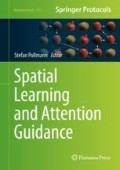Abstract
Neural populations in different brain regions represent different domains of information, but accounting for how population responses in homologous regions in different brains encode the same fine distinctions has been elusive. Common models of cortical functional architectures based on anatomy account for coarse regional topography that encode coarse-scale information such as visual versus auditory stimulation or perception of animate versus inanimate entities but fail to account for fine-scale information that captures distinctions between two songs or two insects. We proposed a method of functional alignment called hyperalignment that aligned high-dimensional neural representational spaces to derive a new common model of cortical functional architecture. This model is based on a common representational space rather than a common cortical topography. By modeling functional topographies as weighted sums of overlapping topographic basis functions, our model also accounts for coarse-scale regional topography and goes further to capture fine-scale topographies that coexist with coarse topographies and carry finer distinctions. In this chapter we present steps for an experimenter to use hyperalignment in their own study to derive a common model representational space and perform analyses in that space.
Access this chapter
Tax calculation will be finalised at checkout
Purchases are for personal use only
References
Haxby JV, Gobbini MI, Furey ML et al (2001) Distributed and overlapping representations of faces and objects in ventral temporal cortex. Science 293:2425–2430. https://doi.org/10.1126/science.1063736
Haxby JV, Connolly AC, Guntupalli JS (2014) Decoding neural representational spaces using multivariate pattern analysis. Annu Rev Neurosci 37:435–456. https://doi.org/10.1146/annurev-neuro-062012-170325
Haxby JV, Guntupalli JS, Connolly AC et al (2011) A common, high-dimensional model of the representational space in human ventral temporal cortex. Neuron 72:404–416. https://doi.org/10.1016/j.neuron.2011.08.026
Guntupalli JS, Hanke M, Halchenko YO et al (2016) A model of representational spaces in human cortex. Cereb Cortex 26:2919–2934. https://doi.org/10.1093/cercor/bhw068
Guntupalli JS, Feilong M, Haxby JV (2018) A computational model of shared fine-scale structure in the human connectome. PLoS Comput Biol 14:e1006120. https://doi.org/10.1371/journal.pcbi.1006120
Kriegeskorte N, Mur M, Bandettini P (2008) Representational similarity analysis—connecting the branches of systems neuroscience. Front Syst Neurosci 2. https://doi.org/10.3389/neuro.06.004.2008
Sabuncu MR, Singer BD, Conroy B et al (2010) Function-based intersubject alignment of human cortical anatomy. Cereb Cortex 20:130–140. https://doi.org/10.1093/cercor/bhp085
Conroy BR, Singer BD, Guntupalli JS et al (2013) Inter-subject alignment of human cortical anatomy using functional connectivity. Neuroimage 81:400–411. https://doi.org/10.1016/j.neuroimage.2013.05.009
Feilong M, Nastase SA, Guntupalli JS, Haxby JV (2018) Reliable individual differences in fine-grained cortical functional architecture. Neuroimage 183:375–386. https://doi.org/10.1016/j.neuroimage.2018.08.029
Taschereau-Dumouchel V, Cortese A, Chiba T et al (2018) Towards an unconscious neural reinforcement intervention for common fears. Proc Natl Acad Sci U S A 115:3470–3475. https://doi.org/10.1073/pnas.1721572115
Naselaris T, Kay KN, Nishimoto S, Gallant JL (2011) Encoding and decoding in fMRI. Neuroimage 56:400–410. https://doi.org/10.1016/j.neuroimage.2010.07.073
Cox RW (1996) AFNI: software for analysis and visualization of functional magnetic resonance neuroimages. Comput Biomed Res 29:162–173
Smith SM, Jenkinson M, Woolrich MW et al (2004) Advances in functional and structural MR image analysis and implementation as FSL. Neuroimage 23:S208–S219. https://doi.org/10.1016/j.neuroimage.2004.07.051
Fischl B, Sereno MI, Tootell RBH, Dale AM (1999) High-resolution intersubject averaging and a coordinate system for the cortical surface. Hum Brain Mapp 8:272–284
Esteban O, Markiewicz CJ, Blair RW et al (2019) fMRIPrep: a robust preprocessing pipeline for functional MRI. Nat Methods 16:111. https://doi.org/10.1038/s41592-018-0235-4
Hanke M, Halchenko YO, Sederberg PB et al (2009) PyMVPA: a python toolbox for multivariate pattern analysis of fMRI data. Neuroinformatics 7:37–53. https://doi.org/10.1007/s12021-008-9041-y
Glasser MF, Coalson TS, Robinson EC et al (2016) A multi-modal parcellation of human cerebral cortex. Nature 536:171–178. https://doi.org/10.1038/nature18933
Kriegeskorte N, Goebel R, Bandettini P (2006) Information-based functional brain mapping. Proc Natl Acad Sci U S A 103:3863–3868. https://doi.org/10.1073/pnas.0600244103
Chen Y, Namburi P, Elliott LT et al (2011) Cortical surface-based searchlight decoding. Neuroimage 56:582–592. https://doi.org/10.1016/j.neuroimage.2010.07.035
Oosterhof NN, Wiestler T, Downing PE, Diedrichsen J (2011) A comparison of volume-based and surface-based multi-voxel pattern analysis. Neuroimage 56:593–600. https://doi.org/10.1016/j.neuroimage.2010.04.270
Schönemann PH (1966) A generalized solution of the orthogonal procrustes problem. Psychometrika 31:1–10. https://doi.org/10.1007/BF02289451
Hyperalignment for between-subject analysis. PyMVPA User Manual. http://www.pymvpa.org/examples/hyperalignment.html. Accessed 31 Mar 2019
Author information
Authors and Affiliations
Editor information
Editors and Affiliations
Rights and permissions
Copyright information
© 2019 Springer Science+Business Media, LLC
About this protocol
Cite this protocol
Guntupalli, J.S. (2019). Hyperaligning Neural Representational Spaces. In: Pollmann, S. (eds) Spatial Learning and Attention Guidance. Neuromethods, vol 151. Humana, New York, NY. https://doi.org/10.1007/7657_2019_25
Download citation
DOI: https://doi.org/10.1007/7657_2019_25
Published:
Publisher Name: Humana, New York, NY
Print ISBN: 978-1-4939-9947-7
Online ISBN: 978-1-4939-9948-4
eBook Packages: Springer Protocols

